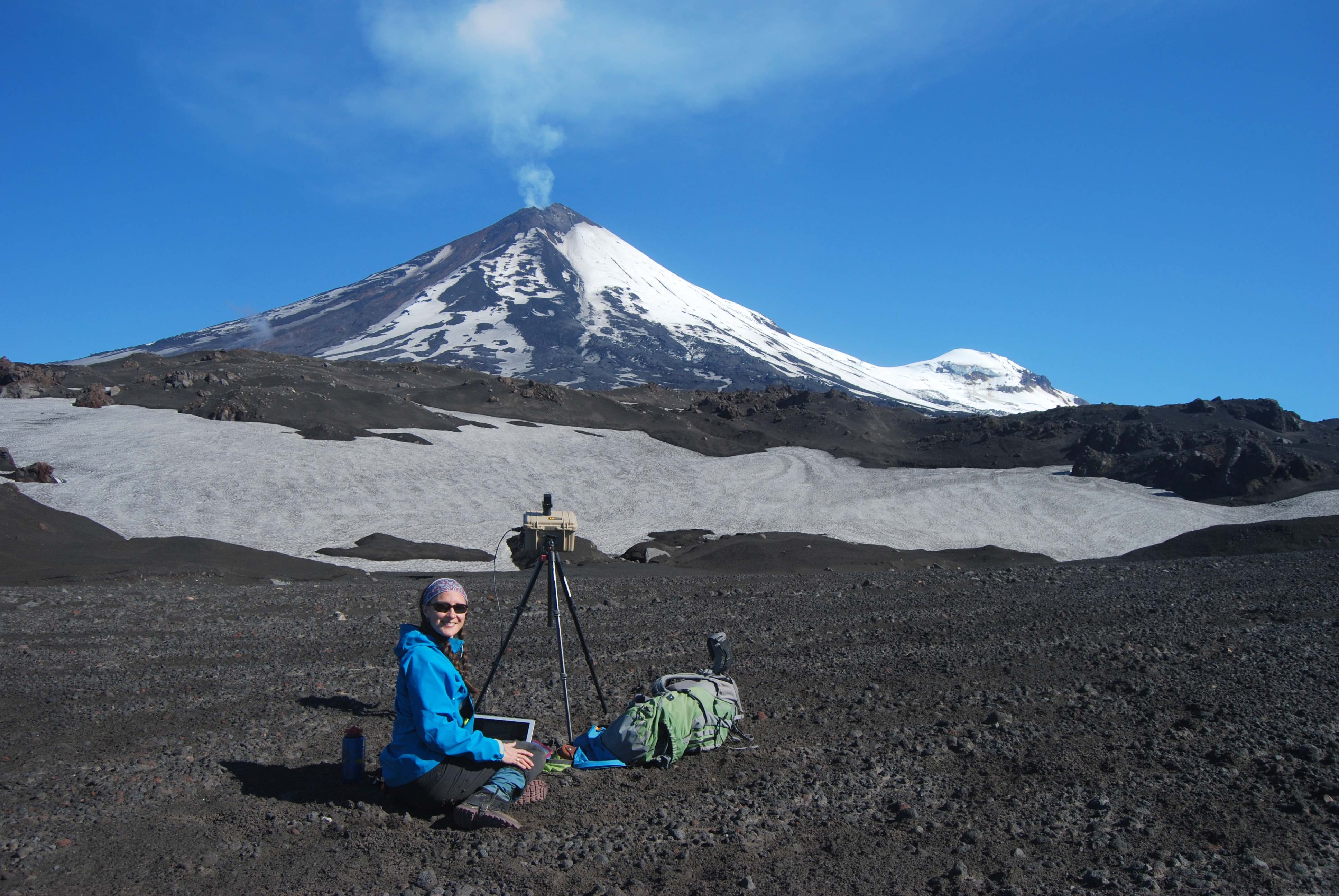New volcano activity monitoring method enhances early warning
Rod Boyce
907-474-7185
Dec. 16, 2021

Taryn Lopez uses a ground-based instrument to measure sulfur dioxide emissions at Pavlof Volcano on the Alaska Peninsula in July 2017.
University of Alaska Fairbanks scientists are presenting their work at the American Geophysical Union’s fall meeting in New Orleans this week. This article is part of a series highlighting UAF research from the world’s largest Earth and space science meeting.
Satellite data can now routinely be used to detect low levels of sulfur dioxide emissions from volcanoes, giving scientists another tool to provide early warnings of volcanic unrest.
The new approach resulted from work led by research assistant professor Taryn Lopez of the University of Alaska Fairbanks Geophysical Institute. Lopez is also a staff member at the Alaska Volcano Observatory, a joint program between the U.S. Geological Survey, the Alaska Division of Geological and Geophysical Surveys and the UAF Geophysical Institute.
The Alaska Volcano Observatory began using the method in spring 2020. The near real-time detection of elevated sulfur dioxide levels led to heightened alert levels before an explosive eruption at Great Sitkin Volcano and during unrest at Korovin and Cleveland volcanoes. All are in the Aleutian Islands.
“We had approximately 300 detections from 11 volcanoes over a year and a half using this method,” Lopez said. “We went from having just one snapshot of what's going on at the volcano to having a time series of observations.”
Alaska has 54 historically active volcanoes, but only one-third are monitored through a seismic network. The rest mostly are tracked using remote sensing and infrasound methods.
“In addition to seismicity, deformation and elevated surface temperatures, elevated quantities of sulfur dioxide can tell us that a volcano is exhibiting above background behavior and that there might be an eruption,” said Lopez.
The ability to detect lower sulfur dioxide levels comes from an instrument aboard the Sentinel 5 Precursor satellite, launched in October 2017.


